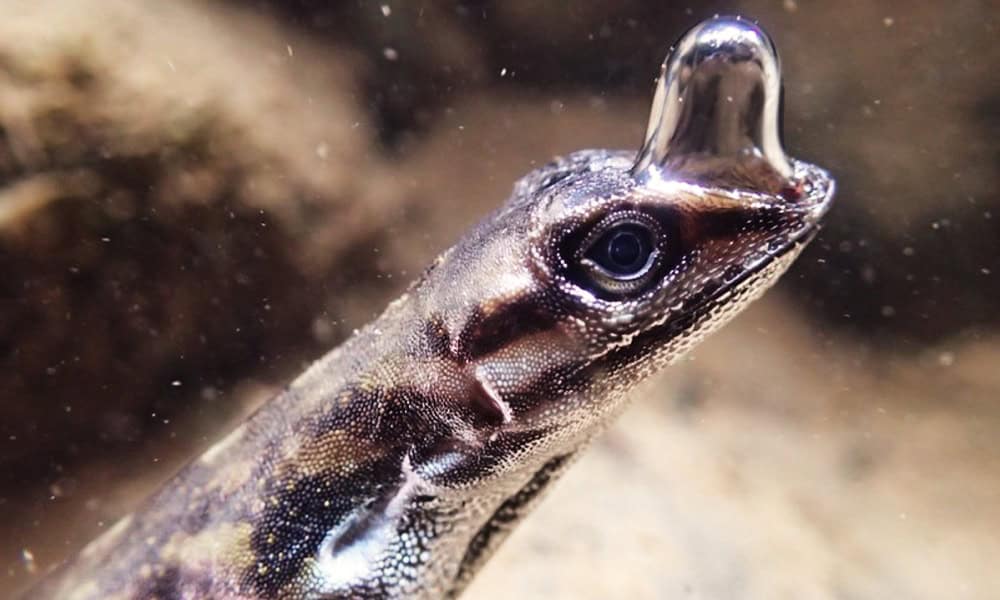Costa Rica is home to thousands of unique animal species, many of which captivate scientists from around the world. Among these fascinating creatures is the anole lizard, a small, semi-aquatic reptile that inhabits the country’s lush rainforests.
Recently, Lindsey Swierk, an assistant research professor of biological sciences at Binghamton University in New York, conducted groundbreaking research on the remarkable abilities of these lizards, often referred to as “diving lizards.”
The anole lizard is known for its incredible survival tactics, particularly its ability to evade predators by diving underwater and using a bubble of air as a makeshift scuba helmet. This bubble, which forms on the top of the lizard’s head, allows the reptile to remain submerged for extended periods, making it nearly invisible to predators.
“Diving underwater and remaining there for a long time is an anti-predator strategy for water anoles. These lizards aren’t particularly speedy, and taking to the water is a very effective option. It’s easy to disappear from a predator’s eye once you hide underwater for a few minutes,” Dr. Swierk explained.
Dr. Swierk’s research captured this fascinating behavior in a video, showing the anole breathing out and re-inhaling air pockets while submerged. She first noticed this unique adaptation while walking along mountain streams in Costa Rica, observing the lizards dive and remain underwater for surprising lengths of time.
According to her findings, published in Biology Letters, the lizard’s bubble system may allow it to extract oxygen while submerged. Swierk theorizes that additional air pockets are trapped around the lizard’s head and throat, enabling it to exchange and refresh the air within the bubble—much like a scuba diver’s air tank.
Dr. Swierk conducted further experiments to test whether the bubble had a functional role in respiration or was simply a byproduct of the lizard’s skin properties. By applying a substance to the lizards’ skin that prevented bubble formation, she observed that those in a control group—able to form bubbles—could stay underwater 32% longer than those with impaired bubble production.
“This is the first experiment that truly shows the adaptive significance of bubbles. Rebreathing bubbles allow lizards to stay underwater longer. Before, we suspected it, but we didn’t actually test if it served a functional role,” Swierk added.
Swierk’s lab plans to conduct several types of follow-up research on the “bubble-breathing” observation.






